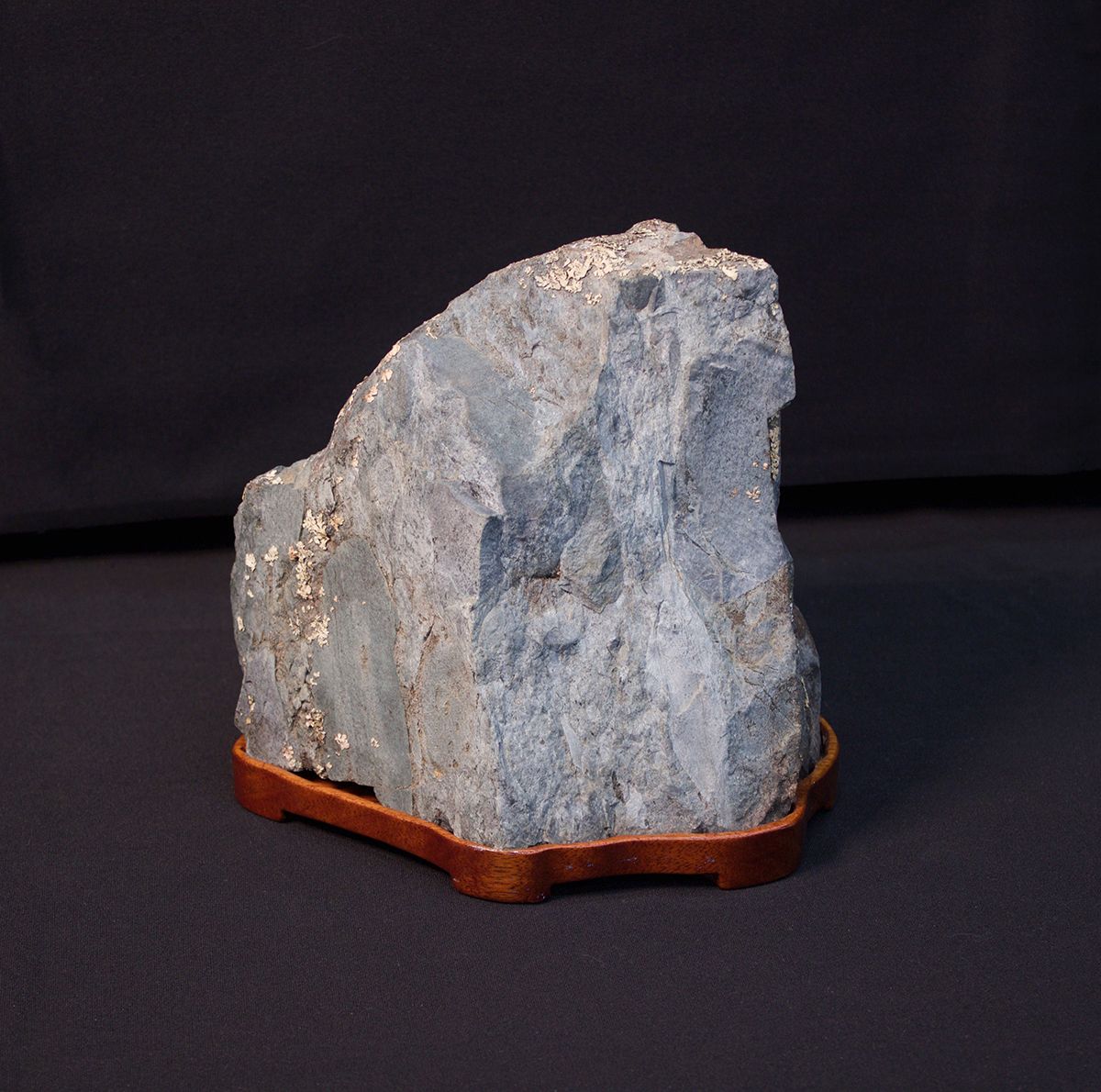North America Viewing Stones: Canada
The Stories Stones Tell: Exploring Winnipeg Bonsai Society’s Viewing Stone Exhibit
By Joe Grande, Canada; Photos by Scott Samson
For the past three years, the Annual Bonsai Display has showcased not only the art of bonsai but also the captivating world of Viewing Stones (Suiseki). Visitors, often delighted by the intricate beauty of these stones, are pleasantly surprised to find them alongside bonsai. After exploring over 130 bonsai trees, ranging from novice creations by newer members to masterpieces cultivated for over 30 years by seasoned enthusiasts, guests encounter the stone display—and their curiosity is sparked anew.
“Why are these stones here?” they ask. “What do they have to do with bonsai?” Our volunteer docents are happy to explain. Bonsai and Viewing Stones are intimately connected art forms, both celebrating nature on a miniature scale. While bonsai involves the shaping of small trees to evoke the essence of full-sized trees in the wild, Viewing Stones are naturally formed rocks that, through their shape, texture, and color, evoke landscapes, animals, or other elements of the natural world. These stones are often left in their unaltered state and are admired for their raw beauty. In formal bonsai displays, Viewing Stones complement the trees, creating a harmonious representation of nature that emphasizes balance, serenity, and contemplation.
Visitors often share their own stories. “I’ve collected stones from every place I’ve visited over the past 20 years,” one attendee mentioned. Another said, “I love stones. I pick up the ones that catch my eye and display them on my shelf.” A third recalled, “My favorite stone is on my bedside table. I love how it feels in my hand—it calms me before I sleep.”
One young woman, attending the show with her boyfriend, spent over an hour carefully observing each stone on display. Every stone was labeled with its mineral type, geological notes, place of origin, backstory, and a poetic title. As she grasped the geological processes behind the Palombino stones from Liguria, Italy—formed over eons—her eyes welled with emotion. She told me, “This is the first day of the rest of my life,” so profound was her joy in discovering the art of Viewing Stones.
An elderly couple also caught my attention, carefully scrutinizing the exhibit. They introduced themselves and asked if I knew anything about Chrysanthemum Stones, rare and prized stones that typically come from Japan and China. Intrigued, I explained their significance, and to my surprise, the couple revealed they might have found some on Vancouver Island in British Columbia.
An hour later, they returned with three stones. One, larger than a pint jar, had an ovoid shape, a smooth surface, and an evocative pattern resembling the sun or moon over a calm landscape. This stone was destined for their grandchildren as a keepsake, a memory of their grandparents.
The couple had discovered these stones near a creek where it met the ocean, following a tip from a local lapidary artisan. However, the stones they brought weren’t Chrysanthemum Stones. Instead, they turned out to be something equally special: Basalt Porphyry Flowerstones.
Basalt Porphyry Flowerstone from Vancouver Island, Canada
Here’s what I shared with the couple a few days later by email:
Basalt Porphyry Flowerstones from Vancouver Island likely formed through volcanic processes similar to those that create Chrysanthemum Stones, though with smaller, more densely spaced flower-like crystals. These stones originate from rapidly cooling lava, which forms a basalt matrix. As the basalt solidifies, minerals like feldspar or calcite crystallize within the stone, forming small, radial clusters about five millimeters in diameter, spaced roughly one centimeter apart.
Unlike the larger floral formations typical of Chrysanthemum Stones, these Flowerstones feature a delicate array of smaller crystals, creating a subtle yet striking pattern against the dark basalt. Despite the differences, both types of stones evoke the intricate beauty of nature, shaped by time and pressure over millions of years.
The most unexpected part of this encounter was their generous gift of two of these Flowerstones to me. I was deeply moved, a reminder of the profound connections we form when we come together to appreciate the natural world and its healing power.
These are just a few of the reactions to this modest exhibit of 34 Viewing Stones, many contributed by first- time exhibitors. Encouraged by the response, our bonsai club plans to offer more programming focused on Viewing Stones, particularly during our long, cold winters. Lectures and presentations will help us deepen our appreciation of this beautiful art form.
Below are a few examples from the exhibit for your enjoyment. We’d love to hear your thoughts on our Viewing Stone exhibit!
People’s Choice Award
Scott Samson
Glacier Pass
Soapstone
Kootenay RIver, British Columbia
This striking stone was collected from the waters at the base of a waterfall along the Kootenay River. Over millennia, the relentless flow of water has smoothed and polished the stone into the graceful shapes you see today. When wet, the soapstone reveals a vibrant array of greens, blues, reds, and magentas. However, when dry, its colors become more subdued, creating a natural, weathered look.
Standing upright, the stone evokes the image of a rugged mountain pass, where one could almost imagine tiny climbers attempting to scale its peak. It is elegantly displayed on a hand-carved black walnut base, crafted by the artist himself.

People’s Choice Award, Second Place
Denis Girardin
Skull Island: Raptor, Bird of Prey
Basalt and granite
Ontario near Manitoba border
Discovered on a hike, it has been exposed to the elements of wind, rain, ice, and snow for eons of time, sculpting the stone and creating a form that defines it today. Can you imagine a decomposed skull or, depending on the angle, the head of a bird of prey. The skull form seems to dominate the sculpture and is rather macabre.
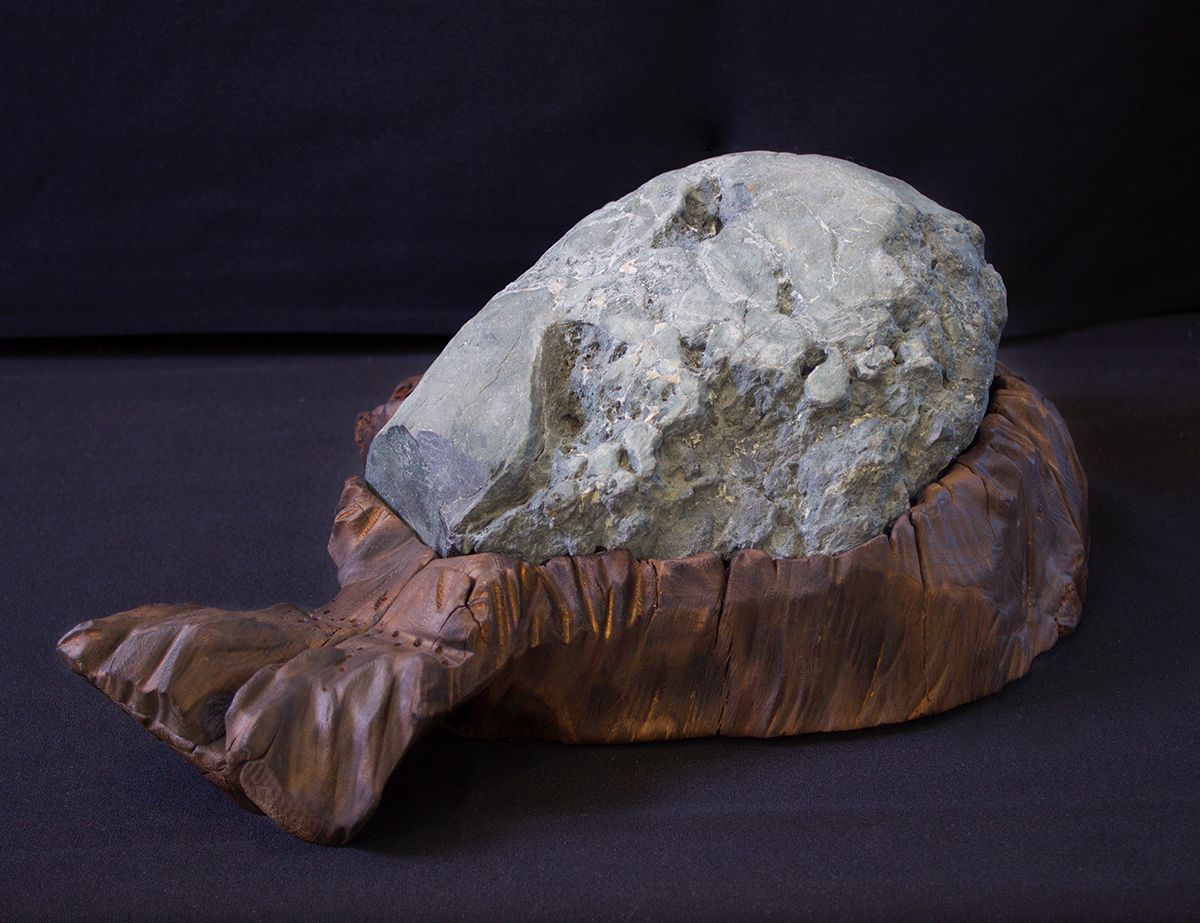
People’s Choice Award, Third Place
Matthew Majkut
IsoScuiseki
Karst Limestone
Vancouver Island
Some mountains were not meant to be climbed.
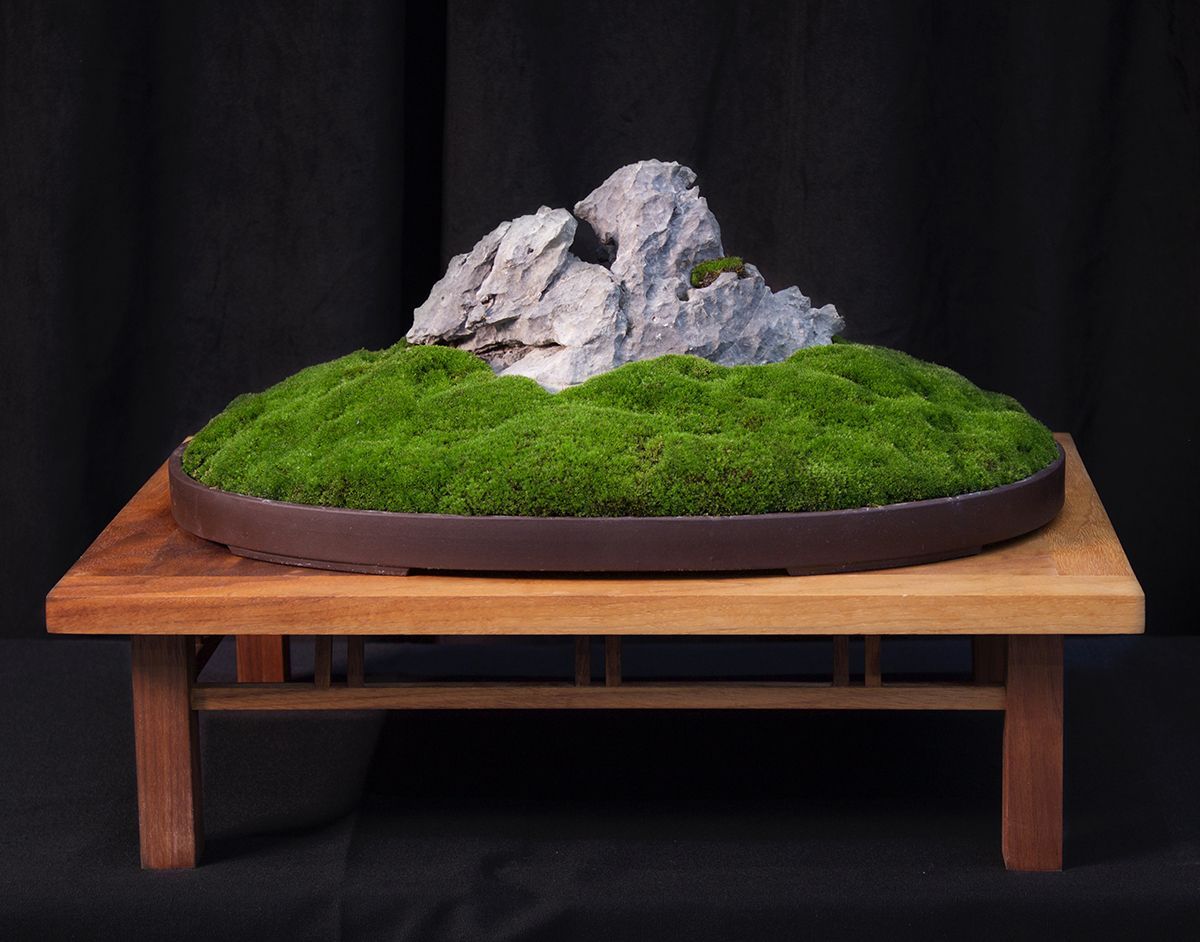
People’s Choice Award, Fourth Place
Scott Samson
Grassy Peak
White Quartz with Lichen
British Columbia
Collected at the peak of a mountain in the interior of BC. The lichen is what originally attracted me to the stone, and I was afraid that the altitude change and a long journey in a suitcase would kill it. 8 years later however, the lichen is flourishing and the illusion of a mountain in the hills is intact. The container this stone is displayed in is a glazed ceramic suiban made by Steven Ahing.
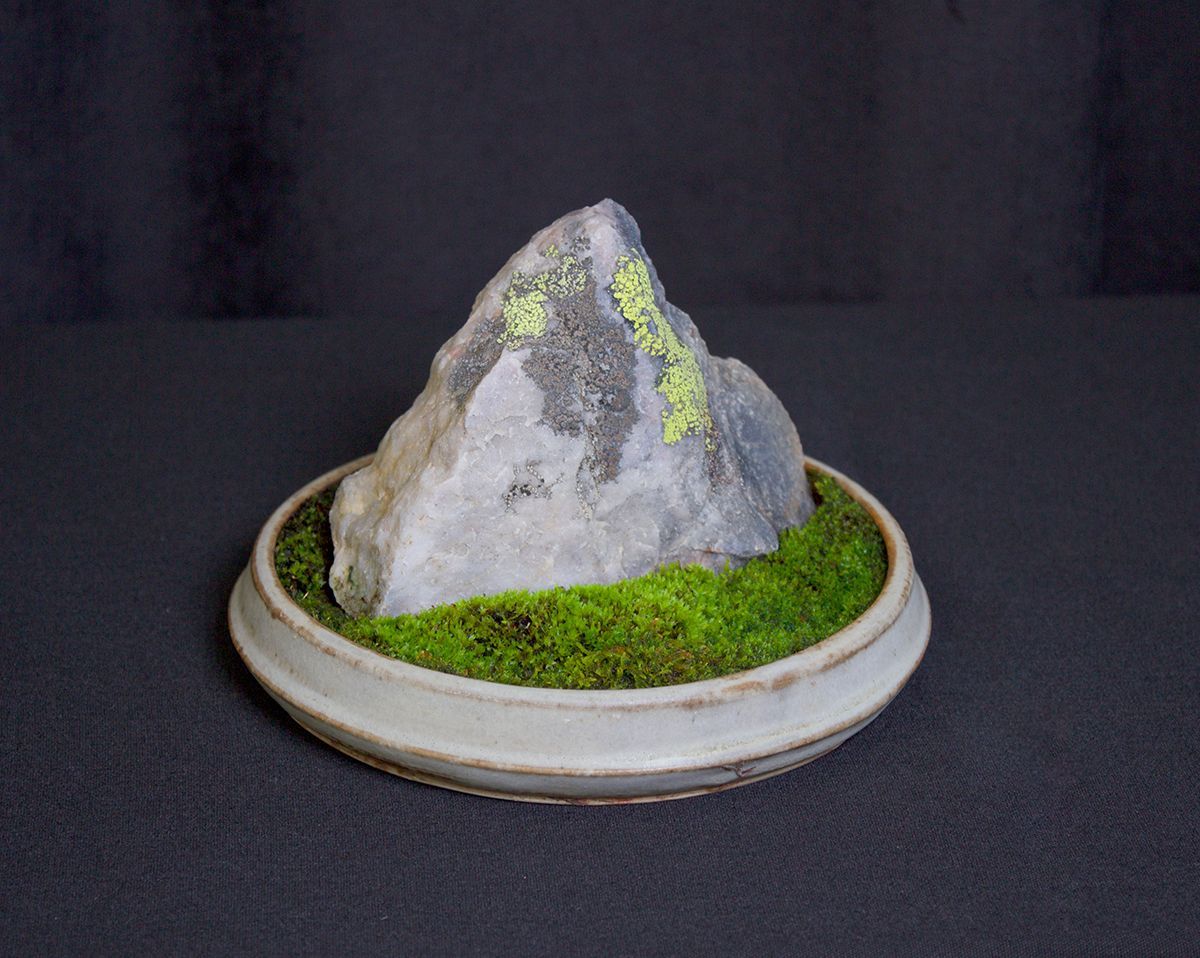
Best of Show
Joe Grande
Echoes of Monument Valley
Palombino (Marly limestone)
Lake Giacopiane, Liguria, Italy.
This stone was collected by Angelo Attiná on the shores of Lake Giacopiane, Liguria, which is famous for its Palombino stones. These stones are coveted for their fantastic shapes, evoking landscapes and figures. In this case, it evokes the formations in Monument Valley, which have achieved some Hollywood fame as the backdrop of many movies and television shows, beginning with several John Wayne films, including Stagecoach in 1939.
As these palombino stones are created, the mountain-like features of these stones face downward. The upper part of the limestone lens is typically flat and meets an overlying layer of clay. As a result, these stones have a naturally occurring, nearly flat bottom. The base is painted mahogany wood, carved by the owner.
Best of Show, Second Place
Carell T. Jackimiek
Dragon Tooth Mountain
Sodalite
Local shop: This scarce mineral is found on Mt Vesuvius, Italy, in Brazil, Bancroft, Ontario, Ice River, B.C., and Maine, USA.
Legend has it that in long ages past when dragons soared the skies of ancient worlds, an epic battle erupted between two giants of an untamed weyr of dragons. Throughout the spewing of fire, the clawing and tearing at armoured flesh, a tooth dislodged and fell to the scorched earth below. Known ever after as Dragon Tooth Mountain.
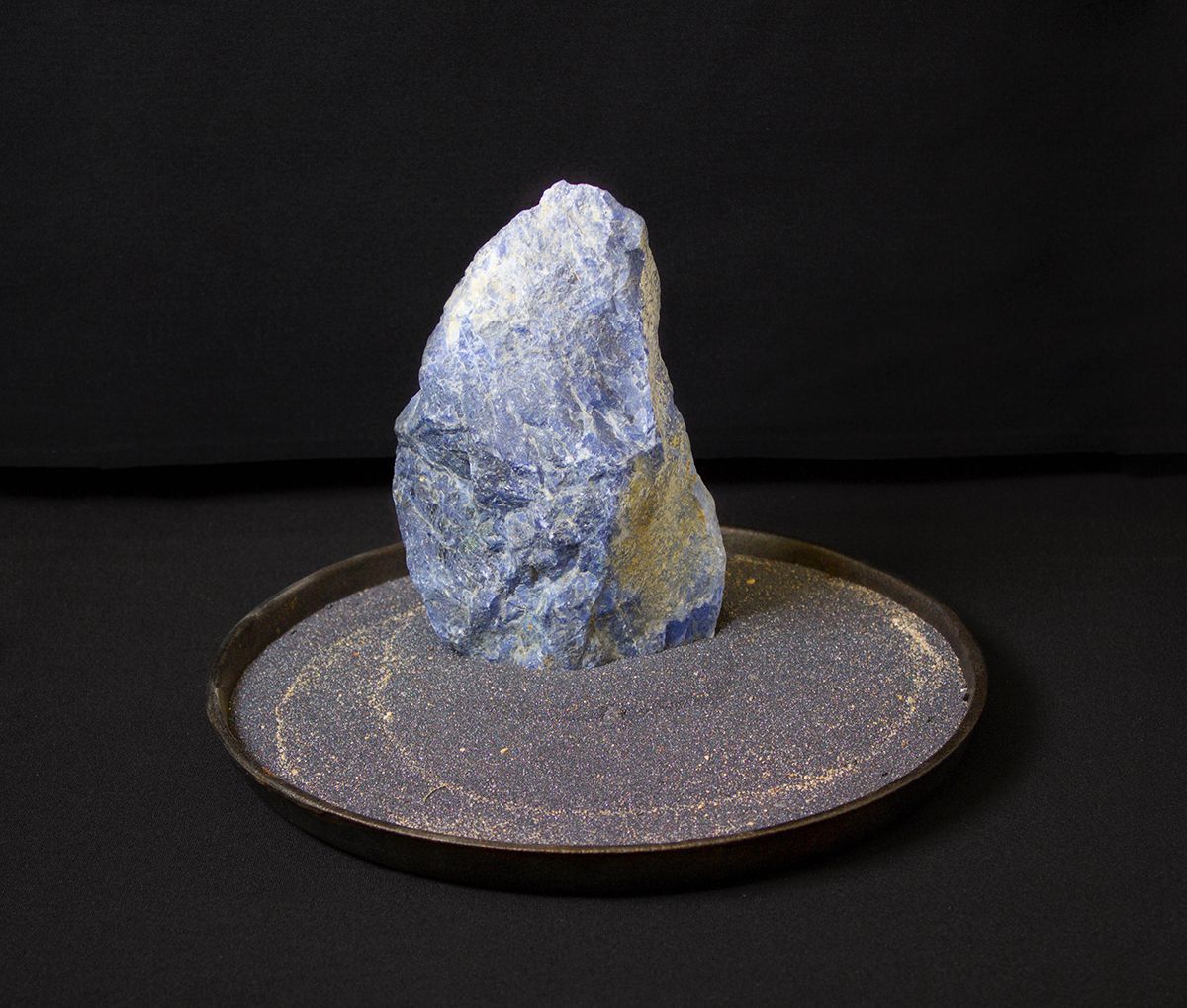
Best of Show, Third Place
Joe Grande
My Left Foot
Dahua shi
Red River in Dahua County, Guangxi Province, China.
These beautiful siliceous stones are dredged from the bed of the Red River. They are hard and are often reddish-brown to golden-brown, sometimes streaked with black or gray or a greenish color. Dahua stones have been naturally polished by rapid-flowing, silt-laden waters.
Best of Show, Fourth Place
Aaron Frost
Drifting Iceberg
Minerals unknown
Near Clearwater Bay, Ontario.
Unlike most viewing stones, which undergo thorough cleaning and sometimes a treatment with oil or wax to develop an artisanal patina, I chose to leave this stone untouched. The lichen that clings to its surface adds to its narrative, much like the way sediment gathers on icebergs and glaciers over time. This decision preserves the natural beauty and evokes the spirit of a drifting iceberg, frozen in time.
